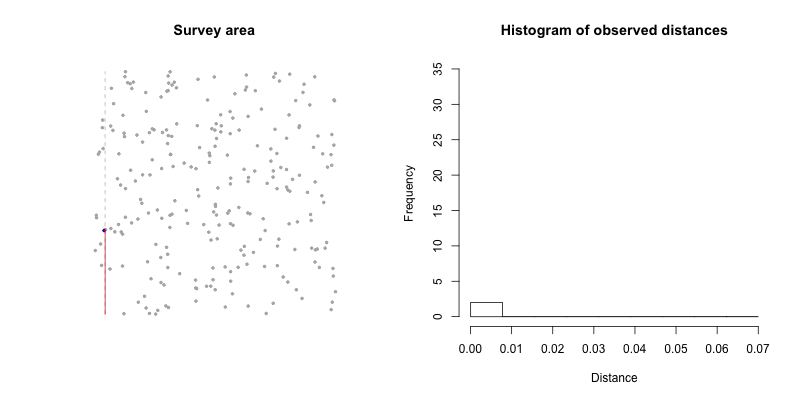What is distance sampling?

Distance sampling is a widely used methodology for estimating animal density or abundance. Its name derives from the fact that the information used for inference are the recorded distances to objects of interest (usually animals) obtained by surveying lines or points. In the case of lines the perpendicular distances to detected animals are recorded, while in the case of points the radial distances from the point to detected animals are recorded. A key underlying concept is that the probability of detecting an animal decreases as its distance from the observer increases. Much of distance sampling methodology is concentrated on detection functions, which model the probability of detecting an animal, given its distance from the transect.
The below animation illustrates a simple line transect survey. As the observer moves along the transects (red line, showing progress along the current transect), objects are detected with a probability dependent on their distance from the observer (blue points are detected). Distances to the objects are recorded in the histogram. The histogram shows a characteristic decrease in frequency as distance increases — it is this relationship that is modelled by the detection function.

R code to generate the above figure may be found here.
For addition information about distance sampling, see.